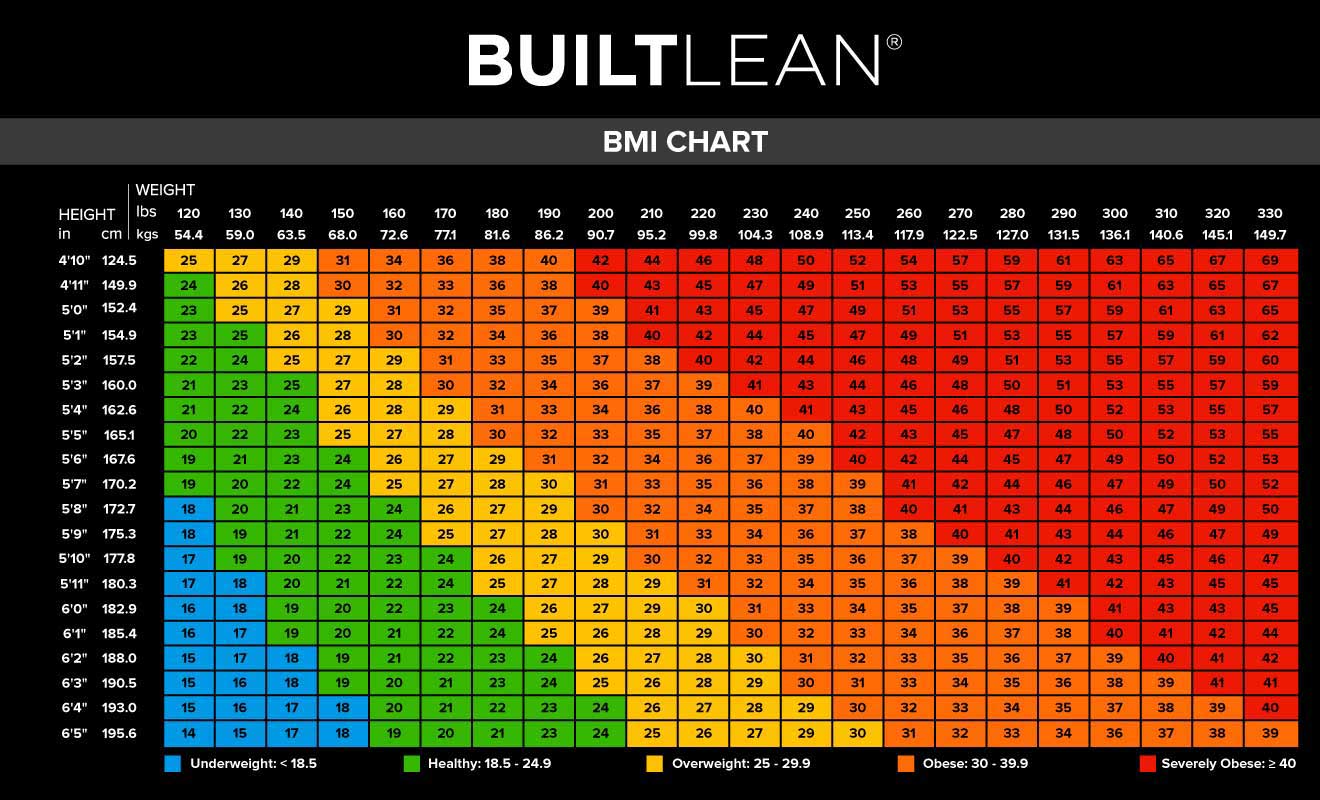“BMI” is discussed in many health & fitness articles and as important marker of health. But do you really know what it means and how to calculate it?
The BMI, or Body Mass Index, is a number calculated by taking your weight in kilograms and dividing it by height in meters squared. The Centers of Disease control states that BMI “provides a reliable indicator of body fatness for most people and is used to screen for weight categories that may lead to health problems.”1
A BMI of less than 18.5 classifies a person as underweight; between 18.5 and 24.9 as normal; between 25 and 29.9 as overweight; 30 and 39.9 as obese and over 40 as morbidly obese as depicted in the chart below:

For reference, according to BMI, male who is around 5’8” should weigh between 130 and 165 pounds. A 5’3” woman should weigh between 105 and 140 pounds. You can use the calculator below to identify your BMI:
Although the BMI calculation has been around since the 1800s, it gained popularity after a study published in the July 1972 issue of the Journal of Chronic Diseases concluded BMI to be the best proxy for body fat percentage among ratios of weight and height.2 Epidemiological studies (studies of large populations) often use the BMI to predict likelihood of a number of diseases. And while BMI may be acceptable to studying groups of people, its application to individuals is limited, as there are numerous significant flaws in using this number and other, much better options exist.
What Does Research Say About The BMI Chart?
A large body of research supports the idea that people with higher BMIs are more prone to a number of health-related complications.3 A review article published in the Lancet (a very highly respected medical journal) showed a significant increase in cancer with a 5 kg/m2 increase in BMI.4 Being overweight or obese at age 40 is associated with a significantly increased risk of dying prematurely.5 BMI predicts diabetes as well as a specialized blood sugar test according to another research article.6 BMIs over 25 are linked to heart disease and high blood pressure.7
Note: Some studies have shown that being underweight is also a risk for premature death, sometimes even more so than being overweight. These studies, however, did not exclude “sick” people, like those with cancer or emphysema, or people who smoke or use dangerous drugs, which often can cause weight loss. There are no studies to my knowledge which show healthy people with desirable body compositions die sooner than overweight people.
Problems With The BMI Chart
All of the BMI studies cited above were done across large populations. Using that data and applying it to an individual without looking at the person’s overall health is a bad idea. BMI calculations do not consider age, gender, frame size, muscle mass, or fat distribution. Subcutaneous fat (under the skin) does not appear to strongly predispose to disease, whereas visceral fat (in and between the organs) does. Therefore, someone can have a normal BMI but a high percentage of visceral fat and be at high risk for diabetes and heart disease but a sumo wrestler, with a high BMI but little visceral fat, will be metabolically healthy.8 Additionally, as most people know, essentially all NFL running backs, most of whom sport 6-packs and sub-10% body fat would be classified as obese under this system. Even a recreational athlete with slightly above average muscle mass could be considered overweight.
Many doctors calculate the BMI of patients and make recommendation simply based on that number, which is a flawed approach for the reasons given above. In fact, I just saw a patient for physique coaching who was 5’9” and weighed 185 pounds. Despite having a 33 inch waist, 11% body fat and perfect cholesterol and blood sugar, his primary care doctor told him he must lose 25 pounds if he didn’t want to get diabetes and heart disease!
Better Alternatives to The BMI Chart
1) Body fat measurement: While BMI is used as proxy for body fat, it is a much better idea to just measure body fat. Health is generally better with lower body fat percentages regardless of the BMI, and this includes populations with documented diseases like diabetes.9 I recommend striving for maximum muscle mass and a body fat below 15% for men and 23% for women. These numbers are within the “fitness range” of recommended body fat according to the American Council on Exercise.
2) Waist to hip circumference: Since it is becoming very clear that the distribution of body fat is an important indicator is disease risk, it makes sense to examine it.10 People with fat distributed around the abdomen are at higher risk for heart disease and diabetes11 12, so aiming to reduce the ratio is a better idea than trying to reduce BMI. In other words, if you just focus on “losing weight” you may very well end up losing muscle as well and looking like a shrunk down version of your former self, with the same risk of serious disease as before.
As always, it is important to look at the “big picture” rather than focusing on a particular calculation to evaluate your chances of developing an obesity-related illness.
http://www.builtlean.com/2013/07/17/bmi-chart/?utm_source=newsletter&utm_medium=email&utm_content=bmi&utm_campaign=weekly+newsletter&inf_contact_key=1560610ff22f5e95983815c0e69c9e0b47981dada84d1ad8bbb62074fbb7e1cf





























